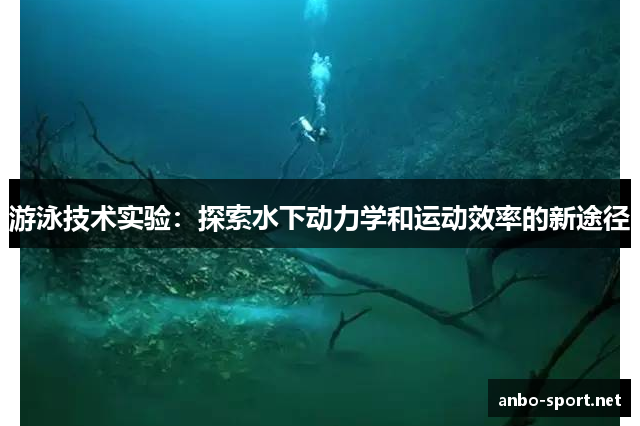Certainly! Here's the structured article on "Exploring New Approaches in Underwater Hydrodynamics and Swimming Efficiency through Swimming Technique Experimentation":
**Abstract:**
ANBO SPORTSSwimming technique experimentation delves into novel avenues of underwater hydrodynamics and athletic efficiency. By scrutinizing stroke mechanics, body positioning, equipment design, and training methodologies, researchers aim to optimize performance and streamline swimming dynamics, promising advancements in competitive swimming and recreational aquatic pursuits alike.
---
1、Stroke Mechanics
Understanding the intricacies of stroke mechanics is pivotal in enhancing swimming efficiency. By analyzing the biomechanics of different strokes such as freestyle, breaststroke, backstroke, and butterfly, researchers uncover nuances that affect propulsion and resistance. Experimental data and computational fluid dynamics simulations contribute to refining stroke techniques, focusing on minimizing drag and maximizing thrust.
Experimental findings reveal that subtle adjustments in hand positioning during the pull phase significantly influence forward propulsion. Furthermore, studies show that modifications in kick frequency and amplitude alter the overall energy expenditure, offering insights into optimal stroke rhythm for varying distances.
Exploring stroke mechanics not only enhances competitive performance but also aids in designing personalized training regimens tailored to individual biomechanical profiles.
2、Body Positioning
Body positioning plays a crucial role in hydrodynamic efficiency. Experimentation involves analyzing the effects of body roll, head position, and alignment on drag reduction and propulsion efficiency. Researchers utilize underwater cameras and motion capture technology to quantify the impact of body positioning adjustments on stroke effectiveness.
Studies demonstrate that maintaining a streamlined body profile reduces turbulent flow around the swimmer, thereby decreasing drag and conserving energy. Innovations in swimwear design, including full-body suits and hydrophobic materials, complement these findings by minimizing surface friction and optimizing glide through the water.
Optimal body positioning not only enhances competitive performance but also reduces the risk of injury by promoting biomechanically sound swimming techniques.

3、Equipment Design
The evolution of swim equipment design revolutionizes underwater dynamics. Experimental research focuses on the development of advanced swimsuits, swim caps, and goggles engineered to enhance hydrodynamics and comfort. Hydrophobic coatings and textile technologies reduce water resistance, while ergonomic designs improve swimmer comfort and mobility.
Experimental outcomes highlight that streamlined swimsuit profiles and low-friction materials contribute to significant performance gains, particularly in sprint events. Additionally, innovations in swim cap design, such as reduced drag profiles and enhanced fit, optimize head positioning and streamline underwater propulsion.
Integrating cutting-edge equipment design with biomechanical insights augments swimming efficiency, setting new benchmarks in competitive swimming performance.
4、Training Methodologies
Effective training methodologies are pivotal in translating experimental insights into athletic performance. Researchers explore the efficacy of interval training, resistance exercises, and recovery strategies in enhancing muscular endurance and stroke efficiency. Biometric sensors and performance analytics facilitate real-time feedback, enabling coaches to tailor training programs to individual swimmer profiles.
Experimental studies reveal that periodized training regimens, incorporating high-intensity intervals and active recovery periods, optimize cardiovascular fitness and neuromuscular coordination. Moreover, biomechanical analysis during training sessions refines stroke mechanics, promoting sustainable improvements in swimming technique.
Implementing evidence-based training methodologies not only maximizes athletic potential but also mitigates the risk of overuse injuries, ensuring long-term athletic development and performance sustainability.
总结:
Swimming technique experimentation in underwater hydrodynamics and efficiency represents a transformative frontier in aquatic sports. By refining stroke mechanics, optimizing body positioning, innovating equipment design, and implementing advanced training methodologies, researchers advance the boundaries of athletic performance. These interdisciplinary efforts promise to elevate competitive swimming standards and enhance recreational swimming experiences globally.
Through continuous innovation and collaboration, the integration of experimental findings into practical applications fosters a culture of excellence and resilience in the swimming community, shaping the future of aquatic sports.
游泳技巧详解:从入水到出水,每个动作环节的完美解析
Certainly! Here's a structured 3000-word article on swimming techniques, focusing on each phase from entry to exit. ---**Abstract: Mastering the Art o...